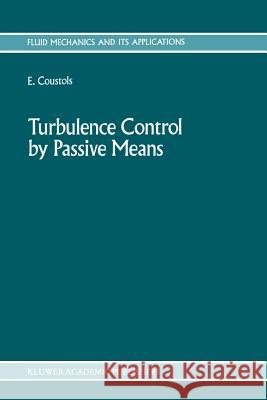Turbulence Control by Passive Means: Proceedings of the 4th European Drag Reduction Meeting » książka
Turbulence Control by Passive Means: Proceedings of the 4th European Drag Reduction Meeting
ISBN-13: 9789401074711 / Angielski / Miękka / 2011 / 182 str.
Turbulence Control by Passive Means: Proceedings of the 4th European Drag Reduction Meeting
ISBN-13: 9789401074711 / Angielski / Miękka / 2011 / 182 str.
(netto: 558,41 VAT: 5%)
Najniższa cena z 30 dni: 578,30 zł
ok. 20 dni roboczych.
Darmowa dostawa!
In the last decades, a lot of effort has been directed towards manipulation of turbulent boundary layers by passive devices such as external manipulators (thin flat plates or aerofoil section devices embedded in the outer layer) and/or internal manipulators (small streamwise grooves acting directly on the inner region) for the purpose of reducing viscous drag. The former are commonly referred to as LEI3U s or BLADEs and the laHer riblets or grooves. Though the details of the mechanisms are not firmly understood, world-wide experimenta. data are available and consistent enough in order to assert the potential of such devices for turbulent drag reduction. It should be noted that following on from recent and successful flight tests, the concept of using grooved surfaces is rather close to finding industrial applications. During the last few years, in Europe, there has been considerable interest in lookillg at the behaviour of such passi, 'e turbulence manipulators. A lot of intense research, concerning both experimental and theoretical studies. has been carried out in some European research centres. For the last fi'e years. informal gatherings. called, . 'orking Pil'ty iIeetings," have been set up, once a year; the aim of these meetings is not only to bring together European researchers acti, 'e in the field of turbulent drag reduction by passi"e means and to hear about recent de'c opments but also to o u t1 ine sui tit ble directions for future research or collaborative programmes.











